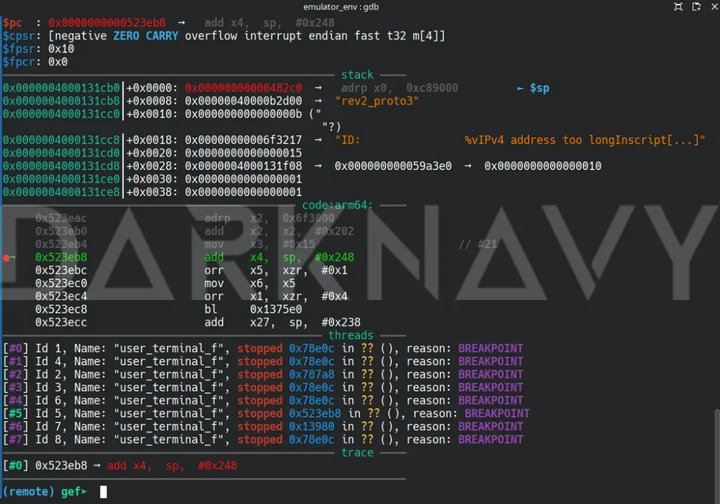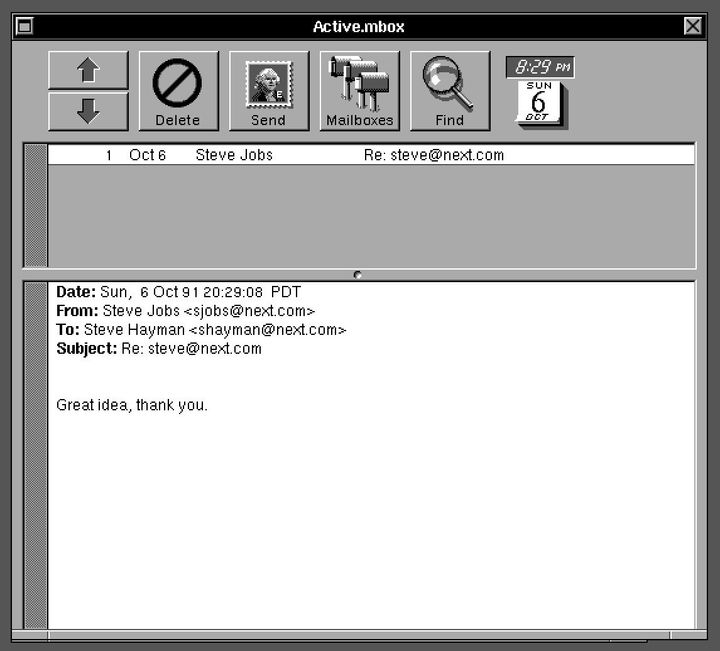LegoGPT: Generating Physically Stable and Buildable Lego
The article discusses the development of a language model called LegoGPT, which is trained on a large corpus of Lego-related text data. It explores the model's capabilities in generating Lego-themed content, including creative ideas, building instructions, and narratives.

Void: Open-source Cursor alternative
https://voideditor.com/download-beta
6502 Illegal Opcodes in the Siemens PC 100 Assembly Manual (1980)
The article explores the technical details behind the Apple 1, the first personal computer developed by Apple co-founders Steve Wozniak and Steve Jobs. It delves into the unique hardware design and engineering challenges that the Apple 1 team faced in creating this pioneering computer.

Doge software engineer's computer infected by info-stealing malware
The article reports that a software engineer's computer was infected with information-stealing malware, which resulted in the theft of cryptocurrency from their Dogecoin wallet. The incident highlights the ongoing threat of cybercrime and the importance of maintaining strong security practices for digital assets.

Dead Reckoning
The article explores the history and development of dead reckoning, a navigation technique that calculates one's current position based on a previous known position and estimates of speed, course, and time. It highlights the importance of this method in early maritime and aviation navigation, as well as its continued use and evolution in modern times.

Starlink User Terminal Teardown
The article provides a first look at the Starlink user terminal, a key component of SpaceX's satellite internet service. It describes the terminal's design and features, offering insights into the user experience of Starlink's forthcoming service.

Reservoir Sampling
Usenix ATC Announcement
The article announces the USENIX Annual Technical Conference (ATC), a premier forum for cutting-edge systems research and innovative practices in the computer systems field. It highlights the conference's focus on real-world systems, new technologies, and practical solutions to complex challenges.
A Formal Analysis of Apple's iMessage PQ3 Protocol [pdf]

Fui: C library for interacting with the framebuffer in a TTY context
The article introduces 'fui', a free and open-source user interface (UI) library for building modern, responsive web applications. It highlights the library's features, such as its modular design, customizability, and support for popular front-end frameworks like React, Angular, and Vue.js.
A flat pricing subscription for Claude Code
This article provides instructions on how to use the Claude code with the Max plan, including information on accessing the Claude API, configuring API keys, and managing your usage and billing.

Audiobookshelf: Self-hosted audiobook and podcast server
Zombieverter: Open source VCU for reusing salvage EV components
The article describes the ZombieVerter VCU, an open-source vehicle control unit designed to convert conventional vehicles into hybrids or electric vehicles. It provides technical details on the hardware and software components of the ZombieVerter system, as well as information on its capabilities and the project's development.
eBPF Mystery: When is IPv4 not IPv4? When it's pretending to be IPv6
The article explores a mystery surrounding eBPF, where IPv4 traffic can be mistakenly identified as IPv6 traffic. It delves into the technical details of this issue and provides insights into how eBPF can be used to understand and diagnose such problems in network traffic.
Verification, the Key to AI (2001)
The article discusses the key to artificial intelligence, highlighting the importance of reinforcement learning and the need to develop agents that can learn and act autonomously in complex environments. It explores the challenges and potential solutions in achieving general intelligence through the integration of different AI techniques.

Robotics meets the culinary arts
This article explores how robotics is being applied in the culinary arts, with researchers at EPFL developing a robotic system that can autonomously prepare and cook meals. The system uses computer vision and machine learning to identify ingredients, follow recipes, and execute the necessary cooking steps with precision.

Hill or High Water
This article explores the challenges faced by communities in the UK that are at risk of flooding due to climate change. It discusses the need for a comprehensive approach to flood management, including both structural and non-structural measures, to protect vulnerable areas and improve community resilience.
Boy Accidentally Orders 70k Lollipops on Amazon. Panic Ensues.
Progress toward fusion energy gain as measured against the Lawson criteria
The article discusses the ongoing progress towards achieving fusion energy breakeven and gain, as measured against the Lawson criteria. It highlights the scientific and technological advancements being made in fusion research, which aim to pave the way for the development of a viable fusion energy source.
Finding a Bug in Chromium
The article discusses a bug in the Chromium web browser that caused it to crash when interacting with certain HTML5 content. The author shares their experience in discovering and reporting the bug, as well as the steps taken by the Chromium team to address the issue.

From: Steve Jobs. "Great idea, thank you."
The article discusses how Steve Jobs' revolutionary idea to create the iPhone in the late 2000s revolutionized the smartphone industry and paved the way for the ubiquity of mobile technology in modern society.

When Abandoned Mines Collapse
The article explores the risks and consequences of abandoned mines collapsing, highlighting the potential for environmental damage, safety hazards, and the challenges of addressing these issues. It emphasizes the importance of proper mine closure and long-term monitoring to mitigate the impacts of abandoned mines.
Podfox: First Container-Aware Browser

Phoenician culture spread mainly through cultural exchange
The article discusses how the spread of Phoenician culture was primarily driven by cultural exchange, rather than large-scale colonization or military conquest. It highlights the important role of maritime trade and the diffusion of Phoenician cultural elements through commercial and social interactions.
Throwaway Code: Don't recycle, throw it away (2017)
The article discusses the benefits of writing 'throwaway code' instead of trying to reuse code in every project. It argues that the time spent refactoring and maintaining reusable code often outweighs the benefits, and that it's better to write disposable code tailored to each specific project's needs.

Prepare your apps for Google Play's 16 KB page size compatibility requirement
The article discusses the upcoming change in Android's page size limit from 4KB to 16KB, and provides guidance for developers to prepare their apps for this change, including optimizing resource usage, reducing the size of assets, and using efficient compression techniques.

How to start a school with your friends
The article discusses the process of starting a university, including obtaining accreditation, funding, and building a curriculum. It provides practical advice and insights for those interested in establishing a higher education institution.
Stability by Design
The article explores the concept of stability in software design, emphasizing the importance of building systems that can withstand changes and maintain their overall integrity. It discusses various techniques and principles, such as modularity, abstraction, and graceful degradation, that can help achieve stability by design.
For better or for worse, the overload (2024)
The article discusses the concept of overload and its impact on individuals and organizations. It explores the causes of overload, such as increased workloads, technology demands, and changing workplace expectations, and examines strategies for managing and mitigating the negative effects of overload.